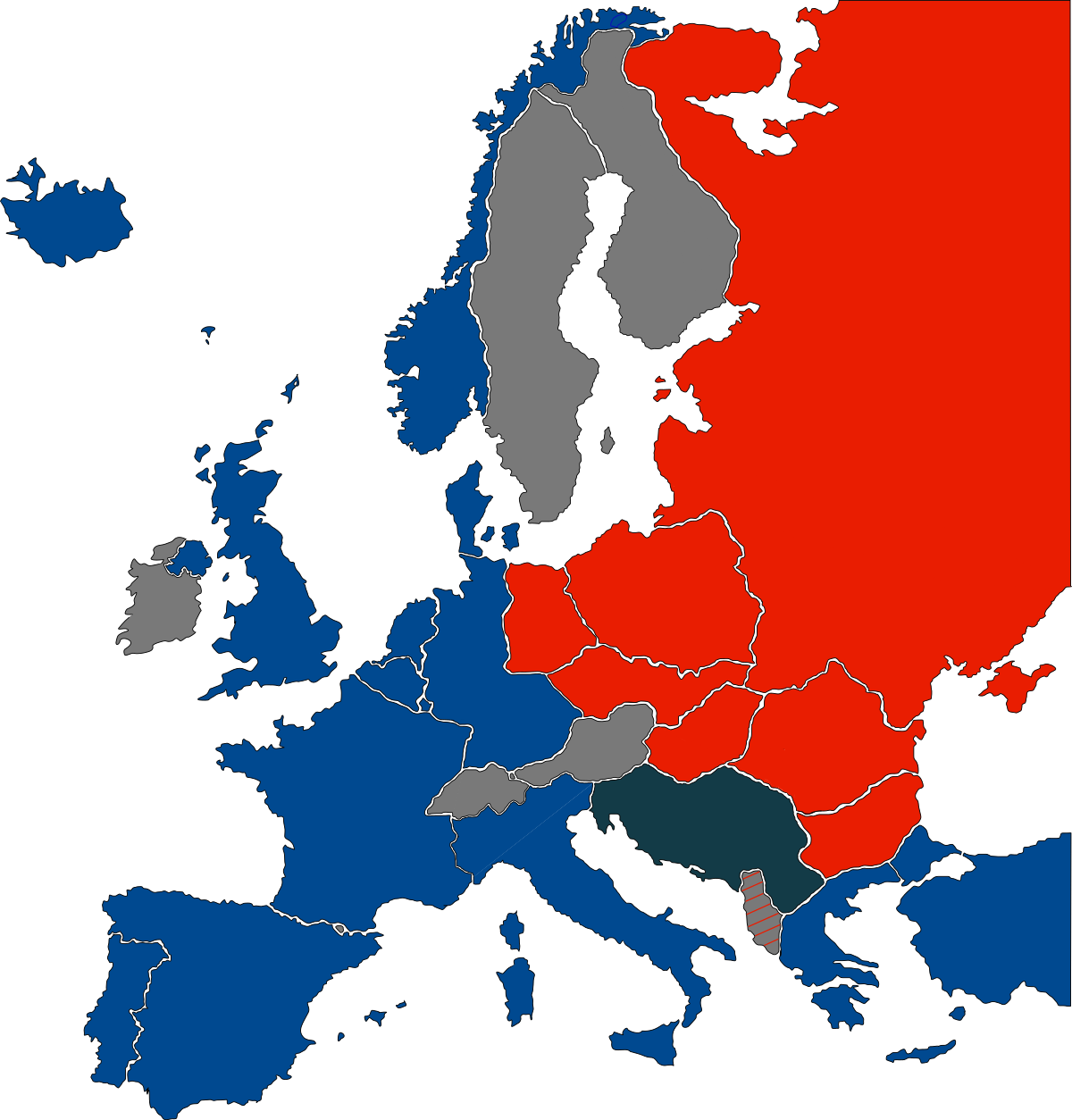Cold War Ideological Barrier.
The Iron Curtain
The origins of the Iron Curtain can be traced back to the end of World War II when Europe was divided into two spheres of influence. The Western Allies, mainly the United States, Britain, and France, controlled West Germany, while the Soviet Union controlled East Germany and most of Eastern Europe. This division became more pronounced as the Cold War intensified. The Iron Curtain was not a physical barrier like a wall but rather a metaphorical term coined by British Prime Minister Winston Churchill in a speech in 1946. It represented the division between the democratic and capitalist countries of Western Europe and the communist countries of Eastern Europe, which were under Soviet influence. The Iron Curtain had significant political, social, and economic implications. It marked the beginning of the Cold War and heightened tensions between the two sides. It led to the establishment of military alliances such as NATO (North Atlantic Treaty Organization) by Western countries and the Warsaw Pact by Eastern bloc nations.
The Iron Curtain also resulted in restricted travel and communication between the two sides. People living in Eastern Europe faced severe restrictions on their freedoms, including limited access to information and censorship. The Berlin Wall, built in 1961, became a symbol of this division, physically separating East and West Berlin. The Iron Curtain began to crumble in the late 1980s with the reforms initiated by Soviet leader Mikhail Gorbachev and growing pressure for change within Eastern European countries. The fall of the Berlin Wall in 1989 marked a significant turning point, leading to the reunification of Germany and the eventual dissolution of the Soviet Union in 1991. Overall, the Iron Curtain represented a stark division between two opposing ideologies and had profound consequences for Europe and the world during the Cold War era.
Injects It's Eggs Into A Caterpillar To Hatch
SA Female Glyptapanteles Wasp
1. Appearance: Glyptapanteles wasps are small insects, typically measuring around 2-3 millimeters in length. They have a slender body with a black or dark brown coloration. The wings are transparent and may have a slightly iridescent sheen. 2. Life cycle: The life cycle of Glyptapanteles wasps involves parasitism of other i...


